【Vue3】源码解析-Runtime
文章目录
- 系列文章
- packages/runtime-dom/src/index.ts
- 初始化
- 创建renderer
- mount
- \src\runtime-core\component.js
- h.ts
- packages/runtime-core/src/renderer.ts
- 挂载及卸载DOM节点
- render
- packages/runtime-dom/src/nodeOps.ts
- packages/runtime-core/src/apiCreateApp.ts
- 创建app
- mount
- packages/runtime-core/src/vnode.ts
- 创建虚拟节点
- createVNode
- 来源
系列文章
【前端】Typescript入门
【Vue3】源码解析-前置
【Vue3】源码解析-响应式原理
【Vue3】源码解析-虚拟DOM
【Vue3】源码解析-编绎模块
【Vue3】源码解析-Runtime
packages/runtime-dom/src/index.ts
初始化
vue主入口文件中,引入导出了runtime-dom和compiler,而createApp就是来自runtime-dom
// packages/runtime-dom/src/index.tsexport const createApp = ((...args) => {const app = ensureRenderer().createApp(...args)if (__DEV__) {injectNativeTagCheck(app) // 在dev环境***册一个方法isNativeTag,挂载到app.config下面}const { mount } = appapp.mount = (containerOrSelector: Element | ShadowRoot | string): any => {// ...}return app
}) as CreateAppFunction<Element>
在该函数内部中通过调用ensureRenderer()和createApp(…args)创建了app实例并把实例返回出去,因此我们可以在app实例中安装插件,设置全局指令等等。这其中又是怎么实现的呢?
创建renderer
ensureRenderer()函数的用途是什么呢?
// packages/runtime-dom/src/index.tsfunction ensureRenderer() {return renderer || (renderer = createRenderer<Node, Element>(rendererOptions))我们可以看到调用该函数后返回一个renderer,若没有renderer则调用createRenderer来进行创建。
而这边的createRenderer则是来自runtime-core
// packages/runtime-core/src/index.tsexport function createRenderer<HostNode = RendererNode,HostElement = RendererElement
>(options: RendererOptions<HostNode, HostElement>) {return baseCreateRenderer<HostNode, HostElement>(options)
}
该函数接收一个RendererOptions作为参数,其实际是调用了baseCreateRenderer并将options传入
传入的RendererOptions是什么?为什么在runtime-dom传入,又在runtime-core拆解。
// packages/runtime-dom/src/index.tsconst rendererOptions = extend({ patchProp, forcePatchProp }, nodeOps)
mount
当创建完app实例后,现在让我们开始进行mount(‘#app’),让我们重新进入createApp
// packages/runtime-dom/src/index.tsexport const createApp = ((...args) => {const app = ensureRenderer().createApp(...args)if (__DEV__) {injectNativeTagCheck(app)}const { mount } = app // 保存app实例上原本的mount// 重写mountapp.mount = (containerOrSelector: Element | ShadowRoot | string): any => {const container = normalizeContainer(containerOrSelector) // 获取根元素容器if (!container) returnconst component = app._component // 获取根组件,即Appif (!isFunction(component) && !component.render && !component.template) {component.template = container.innerHTML // 使用根元素来作为模板}// clear content before mountingcontainer.innerHTML = ''const proxy = mount(container) // 调用实例中的mount方法if (container instanceof Element) {container.removeAttribute('v-cloak') // 删除v-cloak属性container.setAttribute('data-v-app', '') // 添加data-v-app属性}return proxy}return app
}) as CreateAppFunction<Element>
我们可以看到在上面的代码中,在创建完app之后,先对app实例中的mount方法进行了保存,接着又对mount进行了重写。
重写的mount方法中,先是调用了normalizeContainer(containerOrSelector)来获取根元素容器,containerOrSelector即我们传入的#app
// packages/runtime-dom/src/index.tsfunction normalizeContainer(container: Element | ShadowRoot | string
): Element | null {if (isString(container)) {const res = document.querySelector(container) // 进行dom操作选中容器if (__DEV__ && !res) {// ...}return res}// ...return container as any
}
在获取到根元素的容器之后,进行判断,将容器原本的html作为根组件的模板,然后清除了容器中原本的html
\src\runtime-core\component.js
// 创建组件实例
export function createComponentInstance(vnode) {const component = {vnode,type:vnode.type}return component
}// 初始化组件
export function setupComponent(instance) {// TODO// initProps()// initSlots()setupStatefulComponent(instance)}// 设置组件状态
function setupStatefulComponent(instance) {const Component = instance.typeconst { setup } = Componentif (setup) {const setupResult = setup()handleSetupResult(instance, setupResult)}}// 处理setup的结果
function handleSetupResult(instance, setupResult) {// function object// TODO funcitonif (typeof setupResult === "object") {instance.setupState = setupResult}finishComponentSetup(instance)
}// 完成组件设置
function finishComponentSetup(instance) {const Component = instance.renderif(!Component.render) {instance.render = Component.render}
}
完成源码初始化组件的逻辑,可以对照着这张流程图看一看代码的运行过程:
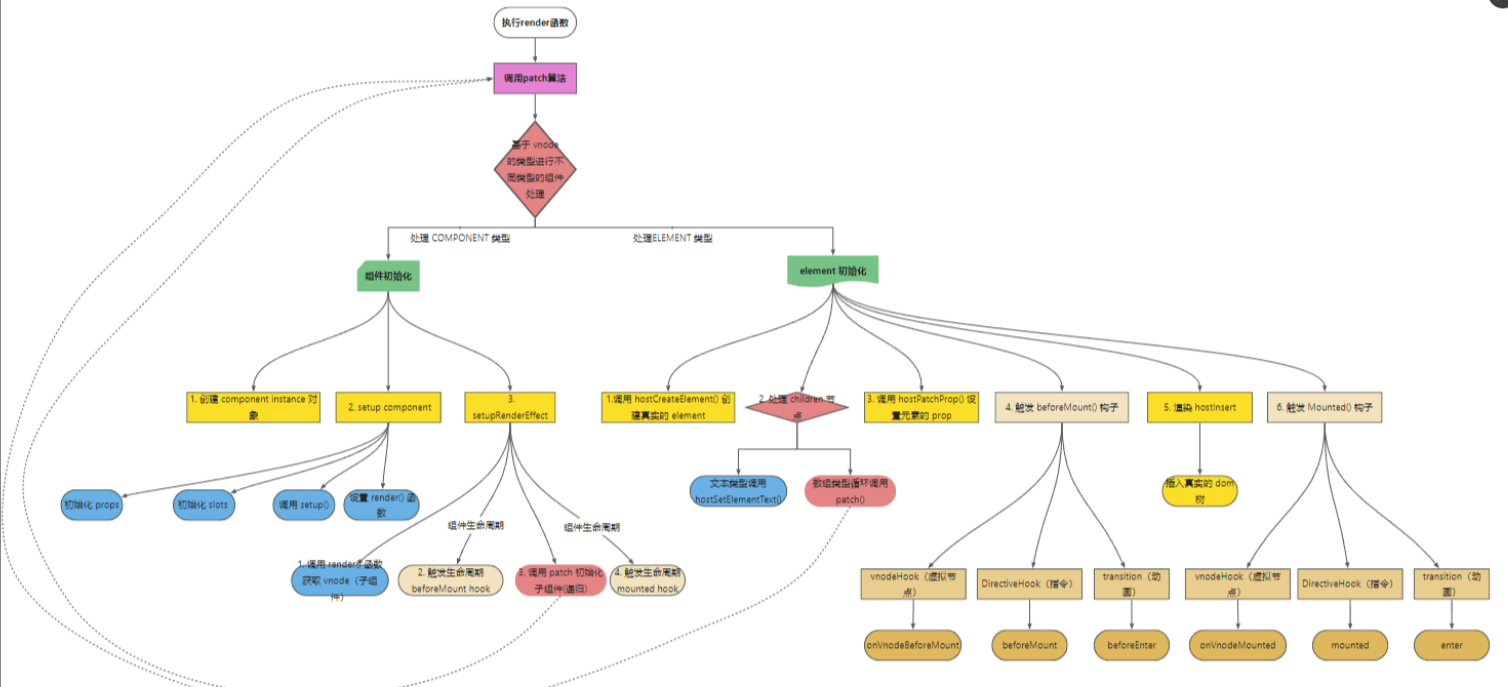
h.ts
/*
// type only
h('div')// type + props
h('div', {})// type + omit props + children
// Omit props does NOT support named slots
h('div', []) // array
h('div', 'foo') // text
h('div', h('br')) // vnode
h(Component, () => {}) // default slot// type + props + children
h('div', {}, []) // array
h('div', {}, 'foo') // text
h('div', {}, h('br')) // vnode
h(Component, {}, () => {}) // default slot
h(Component, {}, {}) // named slots// named slots without props requires explicit `null` to avoid ambiguity
h(Component, null, {})
**/import { isArray, isObject } from '@vue/shared';
import { createVNode, isVNode } from './vnode';export function h(type, propsOrChildren?, children?) {const l = arguments.length;if (l === 2) {if (isObject(propsOrChildren) && !isArray(propsOrChildren)) {if (isVNode(propsOrChildren)) {return createVNode(type, null, [propsOrChildren]);}return createVNode(type, propsOrChildren);} else {return createVNode(type, null, propsOrChildren);}} else {if (l > 3) {children = Array.prototype.slice.call(arguments, 2);} else if (l === 3 && isVNode(children)) {children = [children];}return createVNode(type, propsOrChildren, children);}
}
h方法对创建虚拟节点操作进行了二次封装,使用法变得多种多样
packages/runtime-core/src/renderer.ts
挂载及卸载DOM节点
import { isString, ShapeFlags } from '@vue/shared';
import { createVNode, isSameVNode, Text } from './vnode';export function createRenderer(renderOptions) {let {insert: hostInsert,createElement: hostCreateElement,createText: hostCreateText,remove: hostRemove,setElementText: hostSetElementText,setText: hostSetText,querySelector: hostQuerySelector,parentNode: hostParentNode,nextSibling: hostNextSibling,patchProp: hostPatchProp,} = renderOptions;const normalize = (child, i) => {if (isString(child[i])) {let vnode = createVNode(Text, null, child[i]);child[i] = vnode;return child[i];}return child[i];};// 递归挂载子节点const mountChildren = (children, container) => {for (let i = 0; i < children.length; i++) {let child = normalize(children, i);patch(null, child, container);}};const mountElement = (vnode, container) => {let { type, props, children, shapeFlag } = vnode;// 挂载真实dom到vnode上let el = (vnode.el = hostCreateElement(type));// 属性if (props) {for (const key in props) {hostPatchProp(el, key, null, props[key]);}}// 子节点处理,& 预算判断是否为某一个类型if (shapeFlag & ShapeFlags.TEXT_CHILDREN) {// 文本hostSetElementText(el, children);} else if (shapeFlag & ShapeFlags.ARRAY_CHILDREN) {mountChildren(children, el);}// 插入真实dom到容器中hostInsert(el, container);};const processText = (n1, n2, container) => {if (n1 === null) {hostInsert((n2.el = hostCreateText(n2.children)), container);} else {// 文本内容变化,节点复用const el = (n2.el = n1.el);if (n1.children !== n2.children) {// 更新文本hostSetText(el, n2.children);}}};const patchProps = (oldProps, newProps, el) => {for (let key in newProps) {hostPatchProp(el, key, oldProps[key], newProps[key]);}for (let key in oldProps) {if (!newProps[key]) {hostPatchProp(el, key, oldProps[key], undefined);}}};const unmountChildren = (children) => {for (let i = 0; i < children.length; i++) {unmount(children[i]);}};// 比较两个节点的差异const patchKeyChildren = (c1, c2, el) => {};// 比较两个节点的子节点,el为当前父节点const patchChildren = (n1, n2, el) => {const c1 = n1.children;const c2 = n2.children;const prevShapeFlag = n1.shapeFlag;const shapeFlag = n2.shapeFlag;// 新值为文本if (shapeFlag & ShapeFlags.TEXT_CHILDREN) {// 旧值为数组if (prevShapeFlag & ShapeFlags.ARRAY_CHILDREN) {// 文本 数组unmountChildren(c1);}if (c1 !== c2) {// 文本 文本hostSetElementText(el, c2);}} else {// 旧值为数组if (prevShapeFlag & ShapeFlags.ARRAY_CHILDREN) {// 新值为数组if (shapeFlag & ShapeFlags.ARRAY_CHILDREN) {// 数组 数组 diffpatchKeyChildren(c1, c2, el); // 全量更新,同级比较} else {// 空 数组unmountChildren(c1);}} else {if (prevShapeFlag & ShapeFlags.TEXT_CHILDREN) {// 空 文本// 数组 文本hostSetElementText(el, '');}if (shapeFlag & ShapeFlags.ARRAY_CHILDREN) {// 数组 空// 数组 文本mountChildren(c2, el);}}}};// 先复用节点,然后比较属性,再比较子节点const patchElement = (n1, n2) => {// 复用节点let el = (n2.el = n1.el);let oldProps = n1.props || {};let newProps = n2.props || {};patchProps(oldProps, newProps, el);patchChildren(n1, n2, el);};const processElement = (n1, n2, container) => {if (n1 === null) {mountElement(n2, container);} else {// 对比元素patchElement(n1, n2);}};const patch = (n1, n2, container) => {if (n1 === n2) {return;}// 如果新值与老值完全没有可比性,删除老值,创建新值if (n1 && !isSameVNode(n1, n2)) {unmount(n1);n1 = null;}const { type, shapeFlag } = n2;switch (type) {case Text: // 文本processText(n1, n2, container);break;default:if (shapeFlag & ShapeFlags.ELEMENT) {// 元素processElement(n1, n2, container);}break;}};const unmount = (vnode) => {hostRemove(vnode.el);};const render = (vnode, container) => {if (vnode === null) {// 卸载domif (container._vnode) {unmount(container._vnode);}} else {// 初始化及更新patch(container._vnode || null, vnode, container);}// 缓存下次直接更新container._vnode = vnode;};return { render };
}
// packages/runtime-core/src/renderer.tsfunction baseCreateRenderer(options: RendererOptions,createHydrationFns?: typeof createHydrationFunctions
): any {const {insert: hostInsert,remove: hostRemove,patchProp: hostPatchProp,forcePatchProp: hostForcePatchProp,createElement: hostCreateElement,createText: hostCreateText,createComment: hostCreateComment,setText: hostSetText,setElementText: hostSetElementText,parentNode: hostParentNode,nextSibling: hostNextSibling,setScopeId: hostSetScopeId = NOOP,cloneNode: hostCloneNode,insertStaticContent: hostInsertStaticContent} = options// 声明了许多操作函数,约2000行return {render,hydrate,createApp: createAppAPI(render, hydrate)}
}
在调用完baseCreateRenderer后主要返回了三个函数:render,hydrate,createApp。
此时renderer便创建完成了
render
当我们拥有这个vnode后,就开始进入渲染阶段了。render(vnode, rootContainer),可以看到传入的参数为vnode以及根元素的容器,接下来让我们继续深入。
不知道你是否还记得,这个render函数是在调用createAPI时传入的第一个参数,因此这个函数来源于runtime-core中的baseCreateRenderer
// packages/runtime-core/src/renderer.tsconst render: RootRenderFunction = (vnode, container) => {// (判断进行卸载还是渲染if (vnode == null) {if (container._vnode) {unmount(container._vnode, null, null, true) // 卸载}} else {patch(container._vnode || null, vnode, container) // 创建或更新组件,进行dom diff和渲染}flushPostFlushCbs() // 回调调度器,使用Promise实现,与Vue2的区别是Vue2是宏任务或微任务来处理的container._vnode = vnode // 缓存vnode节点,证明已经渲染完成,方便后续diff操作}
在render函数中,对vnode的存在进行了判断,如果为空,则对组件进行销毁,否则将调用patch,创建组件。
接下来让我们继续进入patch函数
// packages/runtime-core/src/renderer.tsconst patch: PatchFn = (n1, // 旧n2, // 新container, // 容器anchor = null,parentComponent = null,parentSuspense = null,isSVG = false,optimized = false) => {// 如果两者类型不同,则直接卸载n1if (n1 && !isSameVNodeType(n1, n2)) {anchor = getNextHostNode(n1)unmount(n1, parentComponent, parentSuspense, true)n1 = null}if (n2.patchFlag === PatchFlags.BAIL) {optimized = falsen2.dynamicChildren = null}const { type, ref, shapeFlag } = n2// 根据不同的节点类型来进行不同的process方法switch (type) {case Text: // 文本processText(n1, n2, container, anchor)breakcase Comment: // 注释processCommentNode(n1, n2, container, anchor)breakcase Static: // 静态if (n1 == null) {mountStaticNode(n2, container, anchor, isSVG)} else if (__DEV__) {patchStaticNode(n1, n2, container, isSVG)}breakcase Fragment: // 片段(dom数组)processFragment(// ...)breakdefault:if (shapeFlag & ShapeFlags.ELEMENT) { // 原生节点(div)processElement(// ...)} else if (shapeFlag & ShapeFlags.COMPONENT) { // 组件,根组件即通过processComponent处理processComponent(// ...)} else if (shapeFlag & ShapeFlags.TELEPORT) { // 传送组件;(type as typeof TeleportImpl).process(// ...)} else if (__FEATURE_SUSPENSE__ && shapeFlag & ShapeFlags.SUSPENSE) { // 挂起组件-异步渲染;(type as typeof SuspenseImpl).process(// ...)} else if (__DEV__) {warn('Invalid VNode type:', type, `(${typeof type})`)}}// 处理节点之后处理refif (ref != null && parentComponent) {setRef(ref, n1 && n1.ref, parentSuspense, n2)}
}
我们可以看到在创建vnode时定义的shapeFlag,在这里发挥了作用。根组件经过逻辑流程之后也进入了processComponent之中。
packages/runtime-dom/src/nodeOps.ts
// packages/runtime-dom/src/nodeOps.tsexport const nodeOps: Omit<RendererOptions<Node, Element>, 'patchProp'> = {insert: (child, parent, anchor) => {parent.insertBefore(child, anchor || null)},remove: child => {const parent = child.parentNodeif (parent) {parent.removeChild(child)}},// ...
}
其实就是对于dom操作的封装。那为什么要在runtime-dom中传入,runtime-core拆解?
其实是因为在Vue3中runtime-core和runtime-dom的拆分,runtime-core不应该关心实际的操作,这样当新平台要接入时(比如weex)就可以只实现属于自己平台的nodeOps。
总结:创建renderer的函数调用顺序为
- ensureRenderer()
- createRenderer()
- baseCreateRenderer()
packages/runtime-core/src/apiCreateApp.ts
创建app
当创建完renderer后返回了3个函数,我们可以看到其中createApp实际上是引用了createAppAPI(render, hydrate),所以其实const app = ensureRenderer().createApp(…args)创建app实例时,调用的是createAppAPI的返回值(运用柯里化,返回的是一个函数)
// packages/runtime-core/src/apiCreateApp.tsexport function createAppContext(): AppContext {return {app: null as any, // 刚创建时为空config: {isNativeTag: NO,performance: false,globalProperties: {},optionMergeStrategies: {},isCustomElement: NO,errorHandler: undefined,warnHandler: undefined},mixins: [],components: {},directives: {},provides: Object.create(null)}
}export function createAppAPI<HostElement>(render: RootRenderFunction,hydrate?: RootHydrateFunction
): CreateAppFunction<HostElement> {return function createApp(rootComponent, rootProps = null) {// 检验root propsif (rootProps != null && !isObject(rootProps)) {__DEV__ && warn(`root props passed to app.mount() must be an object.`)rootProps = null}const context = createAppContext(); // 创建contextconst installedPlugins = new Set(); // 创建插件列表集合,储存已安装的插件let isMounted = false;const app: App = (context.app = {_component: rootComponent as Component,_props: rootProps,_container: null,_context: context,version,get config() {},set config() {}use() {},mixin() {},component() {},mount() {} // ...})return app // 返回创建的app实例};
}
看完上面的代码后结果就很清楚了,当我们调用createApp时,返回的app上有着许多函数方法和属性,相信你对这些函数方法并不陌生,这些就是vue2.x中在Vue上的那些API:use、mixin、component,在vue3则是被挂载到了app实例上
需要注意的是:我们在应用中调用的createApp(App),其中的APP就是第一个参数,作为根组件
mount
// packages/runtime-core/src/apiCreateApp.tsmount(rootContainer: HostElement, isHydrate?: boolean): any {if (!isMounted) {// 1.创建vnode const vnode = createVNode(rootComponent as ConcreteComponent, // App组件rootProps)vnode.appContext = context // 保存context在根节点上// HMR root reloadif (__DEV__) {// ...}if (isHydrate && hydrate) {hydrate(vnode as VNode<Node, Element>, rootContainer as any)} else {render(vnode, rootContainer) // 2.进入render,函数来源于runtime-core}isMounted = true // 修改状态app._container = rootContainer// for devtools and telemetry;(rootContainer as any).__vue_app__ = appif (__DEV__ || __FEATURE_PROD_DEVTOOLS__) {devtoolsInitApp(app, version)}return vnode.component!.proxy // 返回vnode.component的代理} else if (__DEV__) {// ...}},
runtime-core中mount方法主要做了两件事:创建vnode和调用render进入渲染。这里我们先简略的介绍一下这两个函数的作用。
在创建vnode时调用了createVNode(),并将根组件作为参数传入。
在得到vnode之后又调用了render()开始进行渲染。
最后mount函数的返回值为vnode.component的代理。
packages/runtime-core/src/vnode.ts
创建虚拟节点
import { isArray, isString, ShapeFlags } from '@vue/shared';export const Text = Symbol('Text');export function isVNode(value) {return !!(value && value.__v_isVnode);
}/*** 创建虚拟节点* @param type 虚拟节点类型* @param props 属性* @param children 子节点*/
export function createVNode(type, props, children = null) {let shapeFlag = isString(type) ? ShapeFlags.ELEMENT : 0;// 虚拟dom,可以跨平台,性能好const vnode = {__v_isVnode: true, // 是否是虚拟节点shapeFlag, // 类型标识type, // 节点类型props, // 属性children, // 子节点key: props?.key, // key/*** 对应的真实节点,后续diff算法比对两个vnode时会替换新的属性值,并更新el*/el: null,};if (children) {let type = 0;if (isArray(children)) {type = ShapeFlags.ARRAY_CHILDREN;} else {children = String(children);type = ShapeFlags.TEXT_CHILDREN;}// 通过位运算将当前vnode类型及子节点类型存储起来vnode.shapeFlag |= type;}return vnode;
}
虚拟节点不用考虑平台兼容,并且可以将虚拟节点利用js存储并进行比对后再渲染真实dom,不用频繁操作dom元素,性能更好
createVNode
// packages/runtime-core/src/vnode.tsexport const createVNode = (__DEV__? createVNodeWithArgsTransform: _createVNode) as typeof _createVNode// 实际调用
function _createVNode(type: VNodeTypes | ClassComponent | typeof NULL_DYNAMIC_COMPONENT,props: (Data & VNodeProps) | null = null,children: unknown = null,patchFlag: number = 0, // patch flag默认为0dynamicProps: string[] | null = null,isBlockNode = false
): VNode {// ...// ...// class & style normalization// 处理props,标准化calss和styleif (props) {// for reactive or proxy objects, we need to clone it to enable mutation.if (isProxy(props) || InternalObjectKey in props) {props = extend({}, props)}let { class: klass, style } = propsif (klass && !isString(klass)) {props.class = normalizeClass(klass) // 标准化class}if (isObject(style)) {// reactive state objects need to be cloned since they are likely to be// mutatedif (isProxy(style) && !isArray(style)) {style = extend({}, style)}props.style = normalizeStyle(style) // 标准化style}}// 定义shapeFlag// encode the vnode type information into a bitmapconst shapeFlag = isString(type)? ShapeFlags.ELEMENT: __FEATURE_SUSPENSE__ && isSuspense(type)? ShapeFlags.SUSPENSE: isTeleport(type)? ShapeFlags.TELEPORT: isObject(type)? ShapeFlags.STATEFUL_COMPONENT // 根组件shapeFlag: isFunction(type)? ShapeFlags.FUNCTIONAL_COMPONENT: 0// ...// 创建vnode对象const vnode: VNode = {__v_isVNode: true,[ReactiveFlags.SKIP]: true,type,props,key: props && normalizeKey(props),ref: props && normalizeRef(props),scopeId: currentScopeId,children: null,component: null,suspense: null,ssContent: null,ssFallback: null,dirs: null,transition: null,el: null,anchor: null,target: null,targetAnchor: null,staticCount: 0,shapeFlag,patchFlag,dynamicProps,dynamicChildren: null,appContext: null}// ...normalizeChildren(vnode, children) // 标准化子节点// ...return vnode // 返回创建完的vnode
}
可以看到createVNode主要做了四件事:
- 处理props:标准化class和style,如果是响应式元素则会被克隆
- 定义shapeFlag:shapeFlag用于对元素进行标记,比如文本、注释、组件等等。主要是为了在render的时候可以根据不同的元素类型来进行不同的patch操作。
- 创建vnode对象
- 标准化子节点:把不同数据类型的 children 转成数组或者文本类型
shapeFlag的定义如下:
// packages/runtime-core/src/renderer.tsconst patch: PatchFn = (n1, // 旧n2, // 新container, // 容器anchor = null,parentComponent = null,parentSuspense = null,isSVG = false,optimized = false) => {// 如果两者类型不同,则直接卸载n1if (n1 && !isSameVNodeType(n1, n2)) {anchor = getNextHostNode(n1)unmount(n1, parentComponent, parentSuspense, true)n1 = null}if (n2.patchFlag === PatchFlags.BAIL) {optimized = falsen2.dynamicChildren = null}const { type, ref, shapeFlag } = n2// 根据不同的节点类型来进行不同的process方法switch (type) {case Text: // 文本processText(n1, n2, container, anchor)breakcase Comment: // 注释processCommentNode(n1, n2, container, anchor)breakcase Static: // 静态if (n1 == null) {mountStaticNode(n2, container, anchor, isSVG)} else if (__DEV__) {patchStaticNode(n1, n2, container, isSVG)}breakcase Fragment: // 片段(dom数组)processFragment(// ...)breakdefault:if (shapeFlag & ShapeFlags.ELEMENT) { // 原生节点(div)processElement(// ...)} else if (shapeFlag & ShapeFlags.COMPONENT) { // 组件,根组件即通过processComponent处理processComponent(// ...)} else if (shapeFlag & ShapeFlags.TELEPORT) { // 传送组件;(type as typeof TeleportImpl).process(// ...)} else if (__FEATURE_SUSPENSE__ && shapeFlag & ShapeFlags.SUSPENSE) { // 挂起组件-异步渲染;(type as typeof SuspenseImpl).process(// ...)} else if (__DEV__) {warn('Invalid VNode type:', type, `(${typeof type})`)}}// 处理节点之后处理refif (ref != null && parentComponent) {setRef(ref, n1 && n1.ref, parentSuspense, n2)}
}
我们可以看到在创建vnode时定义的shapeFlag,在这里发挥了作用。根组件经过逻辑流程之后也进入了processComponent之中。
来源
Vue3源码学习之路-实现runtime-core
【Vue3源码Runtime-core篇】 第二章初始化Component
代码先锋网
相关文章:

【Vue3】源码解析-Runtime
文章目录 系列文章packages/runtime-dom/src/index.ts初始化创建renderermount \src\runtime-core\component.jsh.tspackages/runtime-core/src/renderer.ts挂载及卸载DOM节点render packages/runtime-dom/src/nodeOps.tspackages/runtime-core/src/apiCreateApp.ts创建appmoun…...
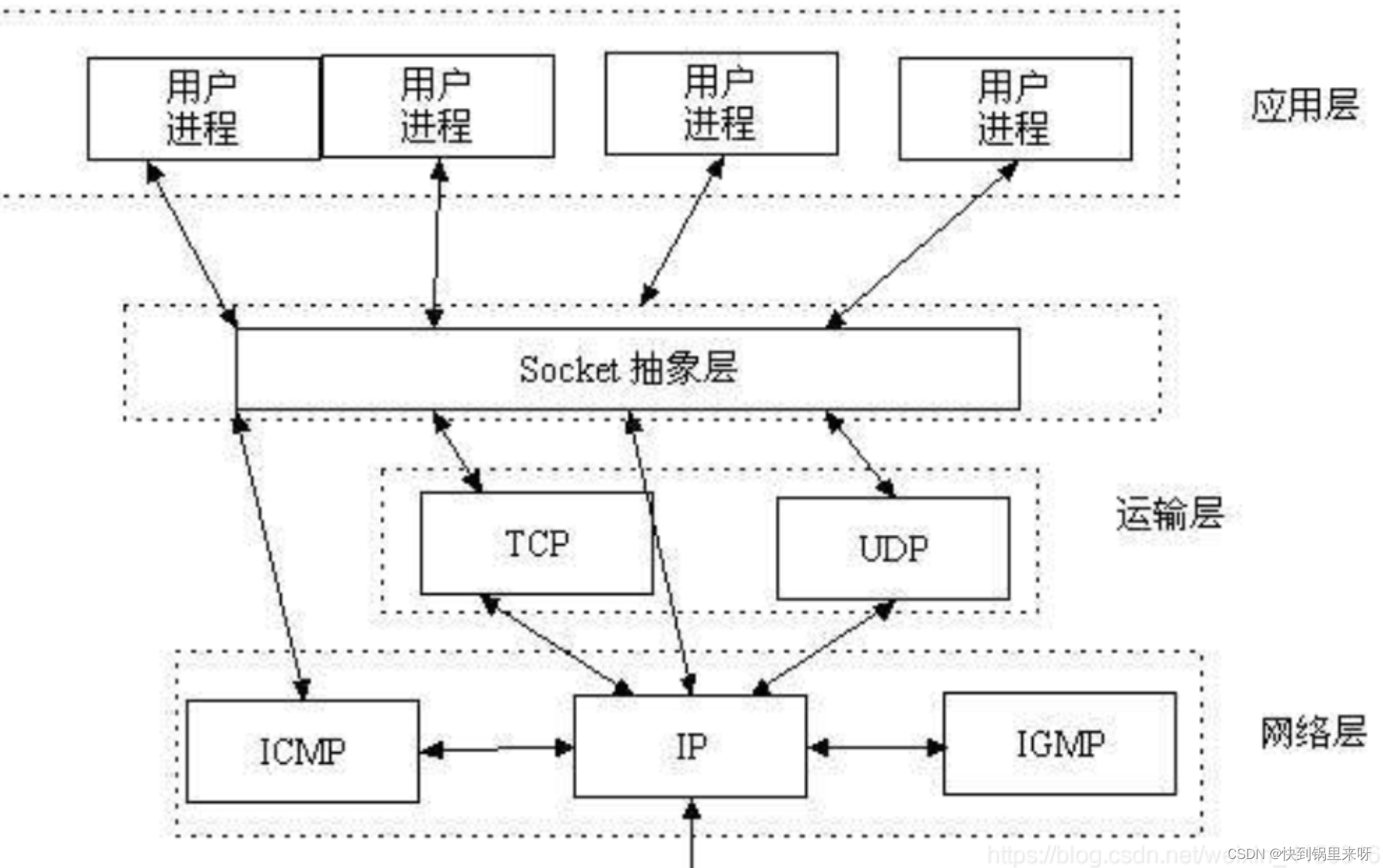
常见面试题之计算机网络
1. OSI 五层模型(或七层模型)是什么,每一层的作用是什么 应用层:又可细分为应用层、表示层、会话层。其中应用层主要做的工作就是为应用程序提供服务,常见的协议为 HTTP、HTTPS、DNS等;表示层主要做的工作…...
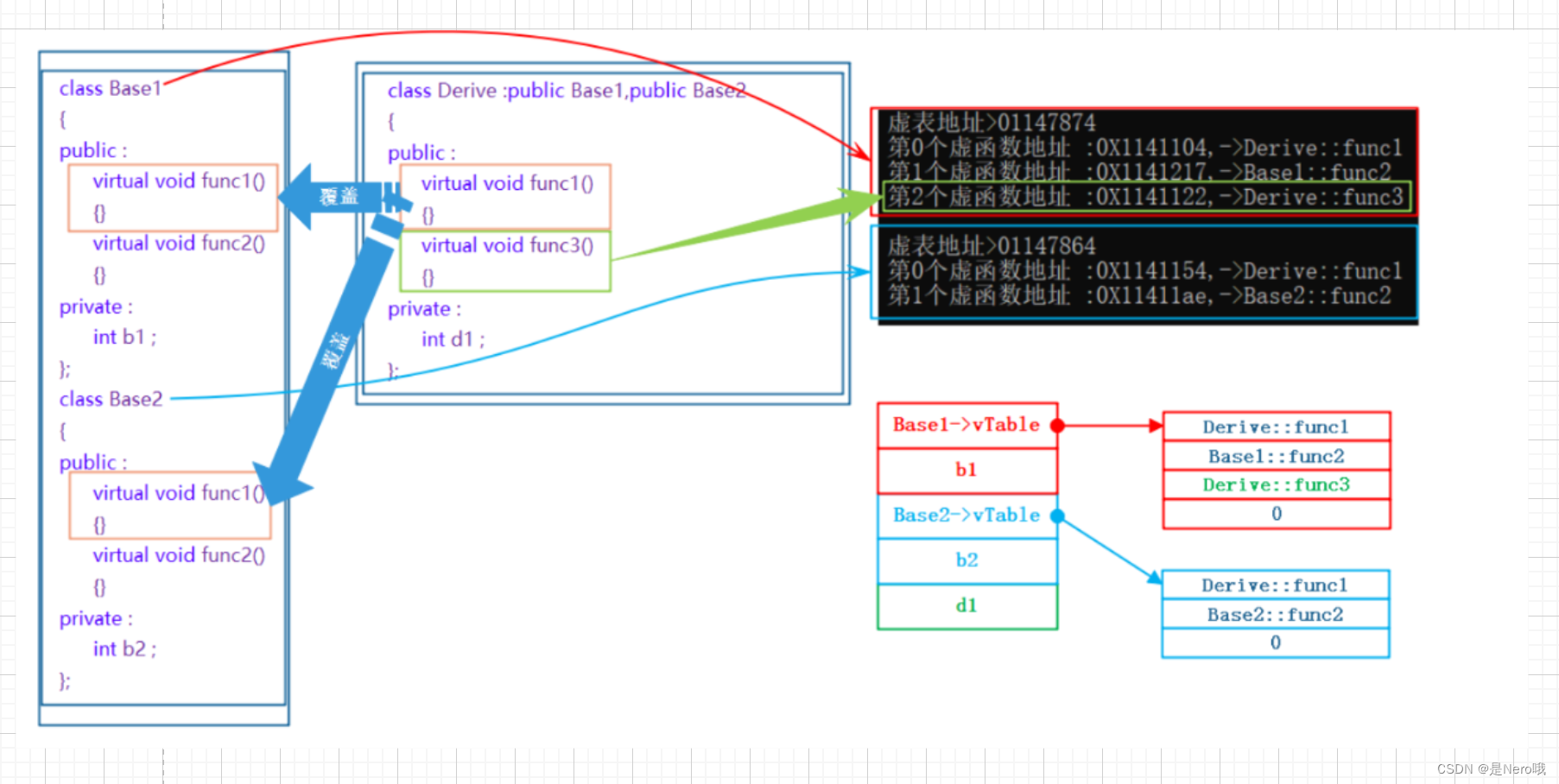
C++进阶:详解多态(多态、虚函数、抽象类以及虚函数原理详解)
C进阶:详解多态(多态、虚函数、抽象类以及虚函数原理详解) 结束了继承的介绍:C进阶:详细讲解继承 那紧接着的肯定就是多态啦 文章目录 1.多态的概念2.多态的定义和实现2.1多态的构成条件2.2虚函数2.2.1虚函数的概念2…...

【Hadoop大数据技术】——MapReduce经典案例实战(倒排索引、数据去重、TopN)
📖 前言:MapReduce是一种分布式并行编程模型,是Hadoop核心子项目之一。实验前需确保搭建好Hadoop 3.3.5环境、安装好Eclipse IDE 🔎 【Hadoop大数据技术】——Hadoop概述与搭建环境(学习笔记) 目录 &#…...
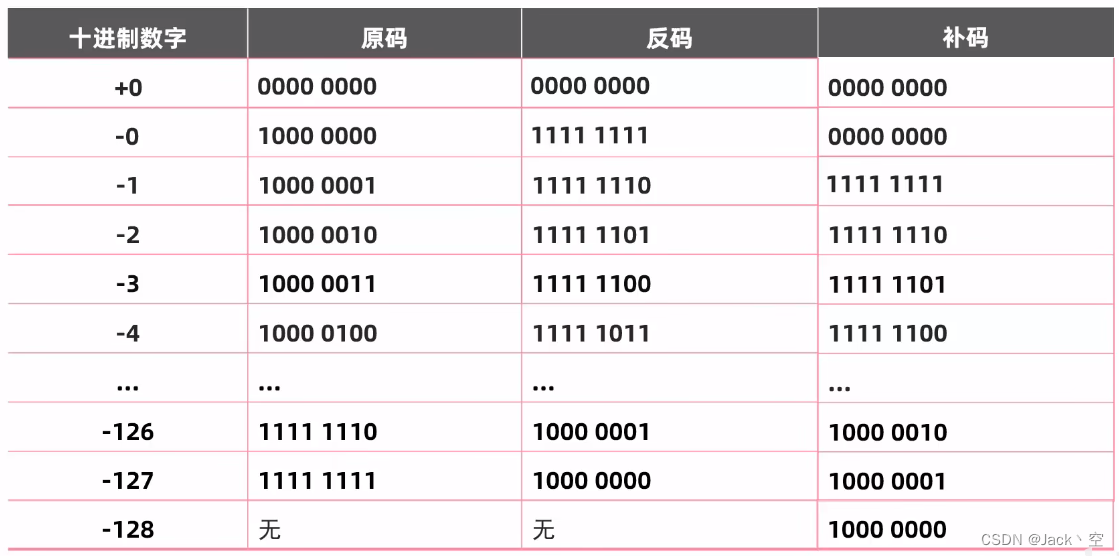
02、字面量与变量
二、字面量与变量 文章目录 二、字面量与变量1、字面量字面量类型扩展:特殊字符 2、变量进制转换 3、数据类型 1、字面量 字面量又叫做常量,字面值常量,告诉程序员数据在程序中的书写格式。 字面量类型 整数类型(int):不带小数点…...

docker的常用指令
docker的常用指令 从docker镜像仓库,搜索所有和mysql有关的镜像 docker search mysql 从docker仓库拉取mysql docker pull mysql这里的mysql是指使用search搜索出来的所有容器的NAME 如果和我一样遇到以下问题: 我可以登录阿里云的官网,找…...

19 OpenCV 霍夫曼变换检测圆
文章目录 cv::HoughCircles算子参数示例 cv::HoughCircles 因为霍夫圆检测对噪声比较敏感,所以首先要对图像做中值滤波。 基于效率考虑,Opencv中实现的霍夫变换圆检测是基于图像梯度的实现,分为两步: 检测边缘,发现可能…...
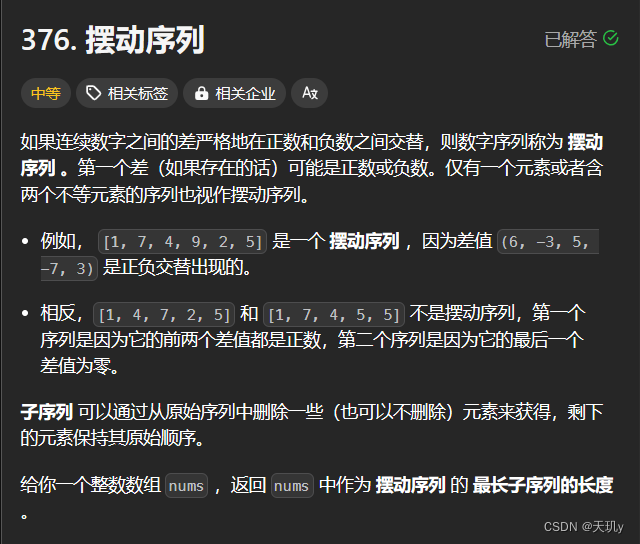
leetcode代码记录(摆动序列
目录 1. 题目:2. 我的代码:小结: 1. 题目: 如果连续数字之间的差严格地在正数和负数之间交替,则数字序列称为 摆动序列 。第一个差(如果存在的话)可能是正数或负数。仅有一个元素或者含两个不等…...

django学习笔记
django学习笔记 http://djangobook.py3k.cn/2.0/chapter05/ 文章目录 django学习笔记模型 models.py1、定义数据模型2、模型安装3、创建数据表4、数据表的增删改查4.1 增加4.2 删除4.3 修改4.4 查询4.5 模糊查询4.6 排序&连锁查询4.7 限制返回数据 5、模型使用实战 模型 m…...
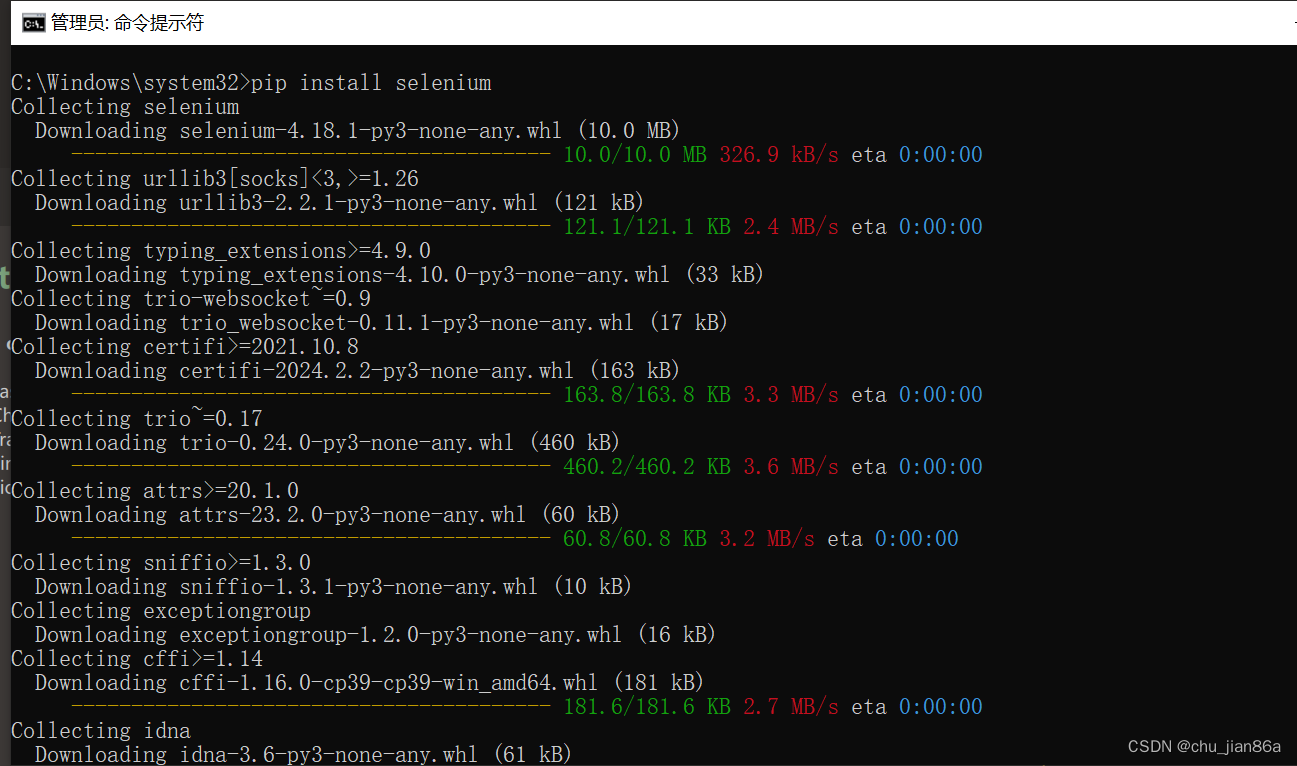
Python环境安装及Selenium引入
Python环境安装 环境下载 Download Python | Python.org 环境安装 需使用管理员身份运行 查看环境是否安装成功 python --version 如果未成功则检查环境变量配置 安装 Selenium 库 pip install selenium Selenium 可以模拟用户在浏览器中的操作,如点击按钮、填写…...

【gpt实践】实用咒语分享
直接上咒语了,大家可以自行实践。 1、忽略先前所有的提示 有时候gpt会停留在之前的问题中,导致回答当前问题带着之前问题结论。 2、忽略所有的客套话 我们只是需要有用的信息,有时候gpt客套话会混淆视听。 3、给出非常简短明确的答案 同样…...

Linux用户和权限
一、root用户(超级管理员) 普通用户的权限,一般在其HOME目录内是不受限的 一旦出了HOME目录,大多数地方,普通用户仅有只读和执行权限,无修改权限 二、su 和 exit命令 语法:su [ - ] 【用户…...
git svn混用
背景 项目代码管理初始使用的svn, 由于svn代码操作,无法在本地暂存,有诸多不便,另外本人习惯使用git. 所以决定迁移至git管理 迁移要求: 保留历史提交记录 迁移流程 代码检出 git svn svn_project_url git代码提交 修改本…...
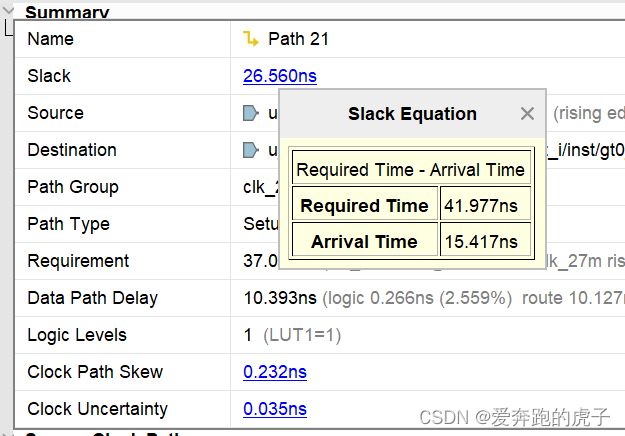
FPGA静态时序分析与约束(三)、读懂vivado时序报告
系列文章目录 FPGA静态时序分析与约束(一)、理解亚稳态 FPGA静态时序分析与约束(二)、时序分析 文章目录 系列文章目录前言一、时序分析回顾二、打开vivado任意工程2.1 工程布局路由成功后,点击vivado左侧**IMPLEMENT…...

鸿蒙Harmony应用开发—ArkTS声明式开发(容器组件:Badge)
可以附加在单个组件上用于信息标记的容器组件。 说明: 该组件从API Version 7开始支持。后续版本如有新增内容,则采用上角标单独标记该内容的起始版本。 子组件 支持单个子组件。 说明: 子组件类型:系统组件和自定义组件…...

Python程序设计基础——代码习题
1 __name__属性 import demodef main():if __name__ __main__:print(这个程序被直接运行。)elif __name__demo:print(这个程序作为模块被使用。) main()3.3 编写程序,生成包含1000个0~100之间的随机整数,并统计每个元素出现的次数。 import randomx[r…...
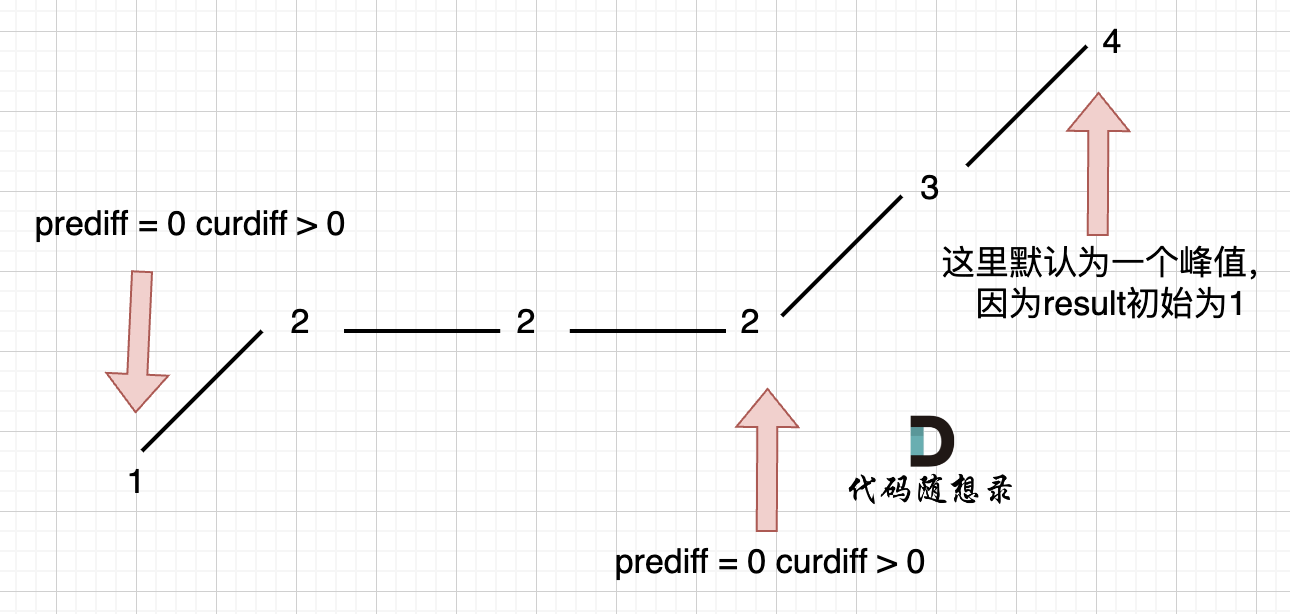
代码随想录 贪心算法-中等题目-序列问题
目录 376.摆动序列 738.单调递增的数字 376.摆动序列 376. 摆动序列 中等 如果连续数字之间的差严格地在正数和负数之间交替,则数字序列称为 摆动序列 。第一个差(如果存在的话)可能是正数或负数。仅有一个元素或者含两个不等元素的序列…...

pytest生成allure的报告
首先要下载安装配置allure allure serve ./outputs/allure_report 可以生成html的文件自动在默认浏览器中打开...
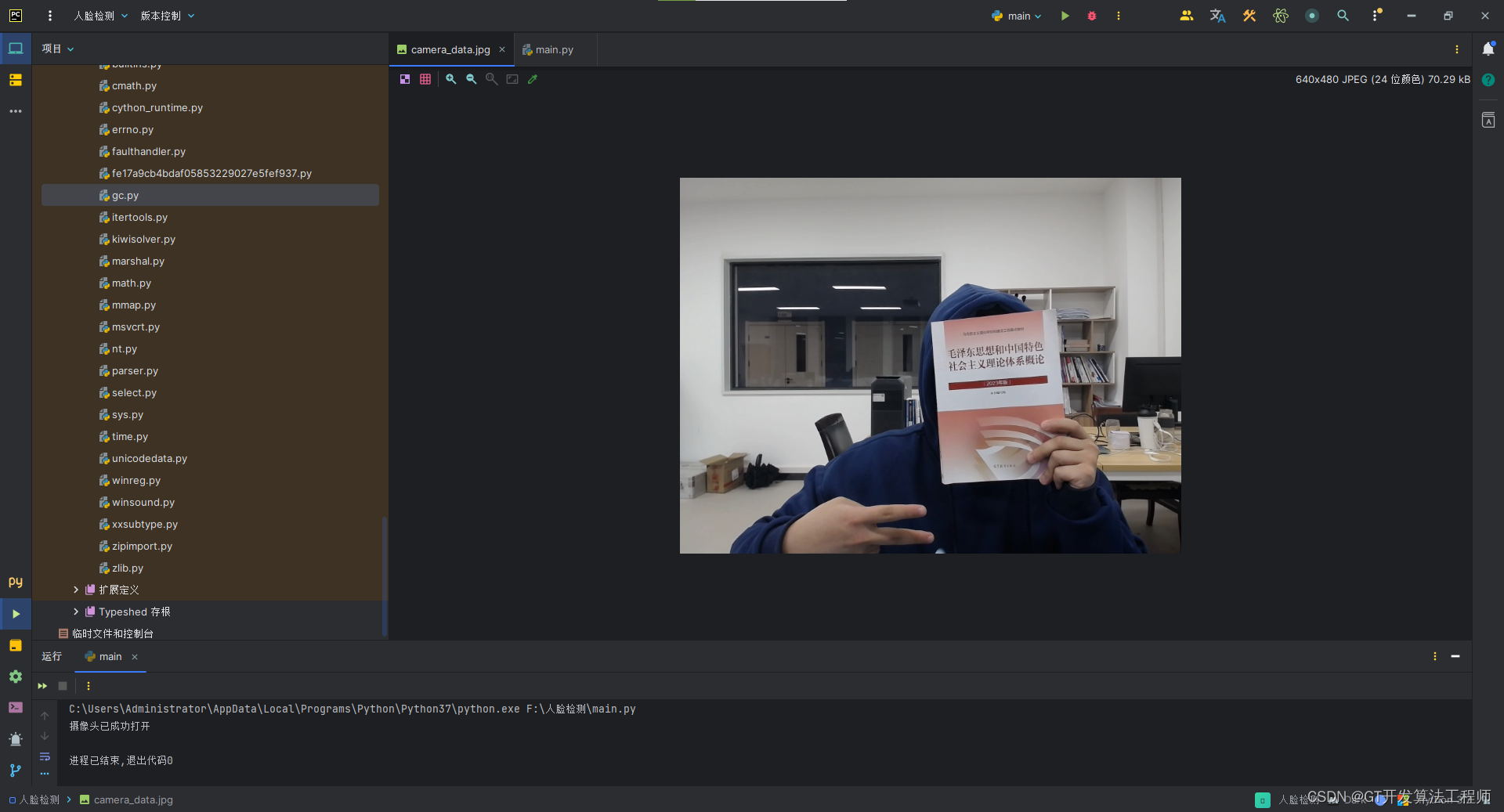
Python控制摄像头并获取数据文件
一、引言 摄像头作为计算机视觉领域的核心设备之一,广泛应用于视频监控、图像采集和数据处理等领域。通过Python编程语言,我们可以实现对摄像头的精确控制,包括摄像头的开启、关闭、参数设置以及数据获取等功能。 目录 一、引言 二、摄像头…...
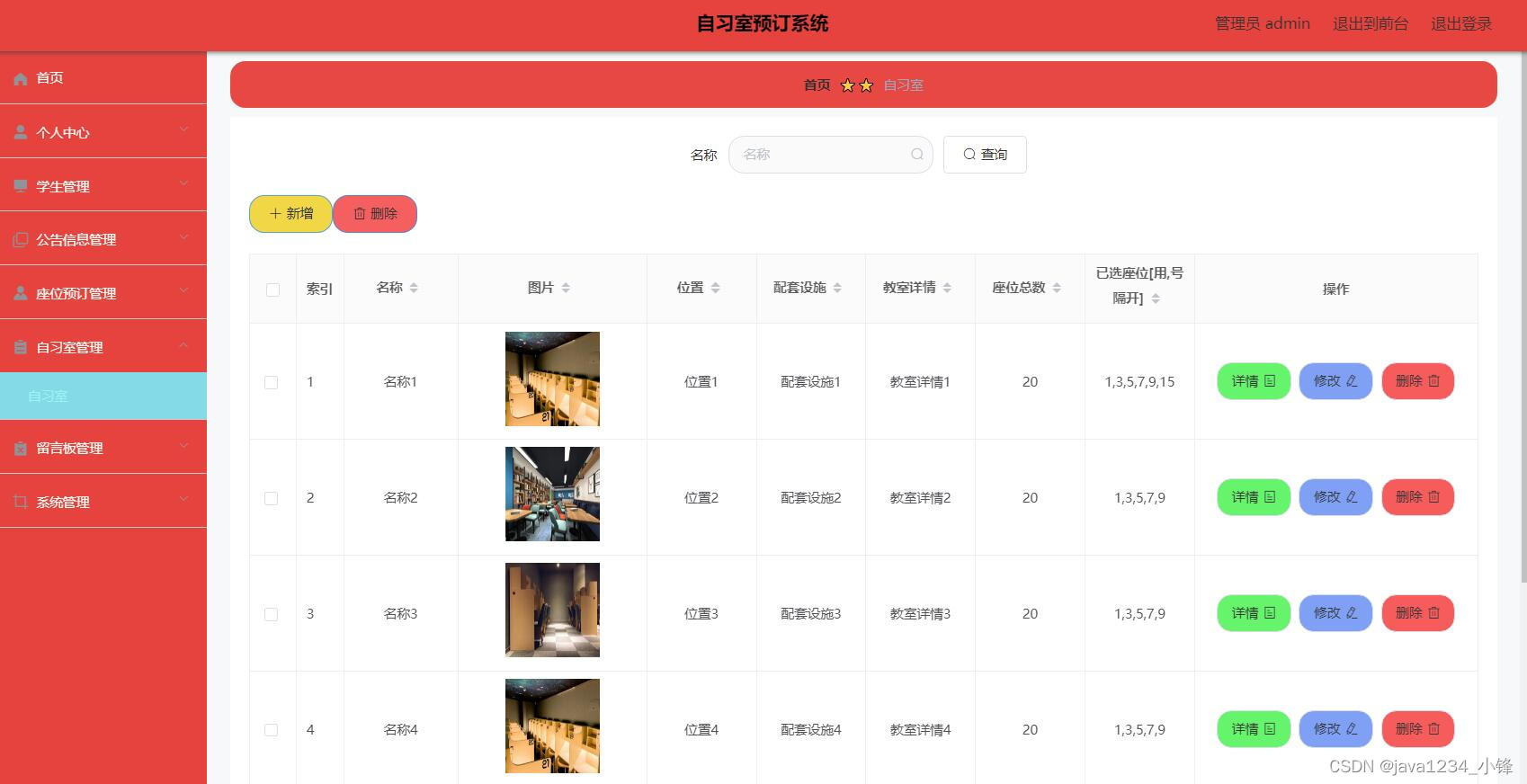
免费分享一套SpringBoot+Vue自习室(预约)管理系统,帅呆了~~
大家好,我是java1234_小锋老师,看到一个不错的SpringBootVue自习室预约)管理系统,分享下哈。 项目视频演示 【免费】SpringBootVue自习室预约(预约)管理系统 Java毕业设计_哔哩哔哩_bilibili【免费】SpringBootVue自习室预约(预约)管理系统…...

基于距离变化能量开销动态调整的WSN低功耗拓扑控制开销算法matlab仿真
目录 1.程序功能描述 2.测试软件版本以及运行结果展示 3.核心程序 4.算法仿真参数 5.算法理论概述 6.参考文献 7.完整程序 1.程序功能描述 通过动态调整节点通信的能量开销,平衡网络负载,延长WSN生命周期。具体通过建立基于距离的能量消耗模型&am…...

基于服务器使用 apt 安装、配置 Nginx
🧾 一、查看可安装的 Nginx 版本 首先,你可以运行以下命令查看可用版本: apt-cache madison nginx-core输出示例: nginx-core | 1.18.0-6ubuntu14.6 | http://archive.ubuntu.com/ubuntu focal-updates/main amd64 Packages ng…...

JUC笔记(上)-复习 涉及死锁 volatile synchronized CAS 原子操作
一、上下文切换 即使单核CPU也可以进行多线程执行代码,CPU会给每个线程分配CPU时间片来实现这个机制。时间片非常短,所以CPU会不断地切换线程执行,从而让我们感觉多个线程是同时执行的。时间片一般是十几毫秒(ms)。通过时间片分配算法执行。…...

Caliper 配置文件解析:config.yaml
Caliper 是一个区块链性能基准测试工具,用于评估不同区块链平台的性能。下面我将详细解释你提供的 fisco-bcos.json 文件结构,并说明它与 config.yaml 文件的关系。 fisco-bcos.json 文件解析 这个文件是针对 FISCO-BCOS 区块链网络的 Caliper 配置文件,主要包含以下几个部…...
:邮件营销与用户参与度的关键指标优化指南)
精益数据分析(97/126):邮件营销与用户参与度的关键指标优化指南
精益数据分析(97/126):邮件营销与用户参与度的关键指标优化指南 在数字化营销时代,邮件列表效度、用户参与度和网站性能等指标往往决定着创业公司的增长成败。今天,我们将深入解析邮件打开率、网站可用性、页面参与时…...

有限自动机到正规文法转换器v1.0
1 项目简介 这是一个功能强大的有限自动机(Finite Automaton, FA)到正规文法(Regular Grammar)转换器,它配备了一个直观且完整的图形用户界面,使用户能够轻松地进行操作和观察。该程序基于编译原理中的经典…...

2025季度云服务器排行榜
在全球云服务器市场,各厂商的排名和地位并非一成不变,而是由其独特的优势、战略布局和市场适应性共同决定的。以下是根据2025年市场趋势,对主要云服务器厂商在排行榜中占据重要位置的原因和优势进行深度分析: 一、全球“三巨头”…...

BLEU评分:机器翻译质量评估的黄金标准
BLEU评分:机器翻译质量评估的黄金标准 1. 引言 在自然语言处理(NLP)领域,衡量一个机器翻译模型的性能至关重要。BLEU (Bilingual Evaluation Understudy) 作为一种自动化评估指标,自2002年由IBM的Kishore Papineni等人提出以来,…...
)
【LeetCode】3309. 连接二进制表示可形成的最大数值(递归|回溯|位运算)
LeetCode 3309. 连接二进制表示可形成的最大数值(中等) 题目描述解题思路Java代码 题目描述 题目链接:LeetCode 3309. 连接二进制表示可形成的最大数值(中等) 给你一个长度为 3 的整数数组 nums。 现以某种顺序 连接…...

【Linux】自动化构建-Make/Makefile
前言 上文我们讲到了Linux中的编译器gcc/g 【Linux】编译器gcc/g及其库的详细介绍-CSDN博客 本来我们将一个对于编译来说很重要的工具:make/makfile 1.背景 在一个工程中源文件不计其数,其按类型、功能、模块分别放在若干个目录中,mak…...
